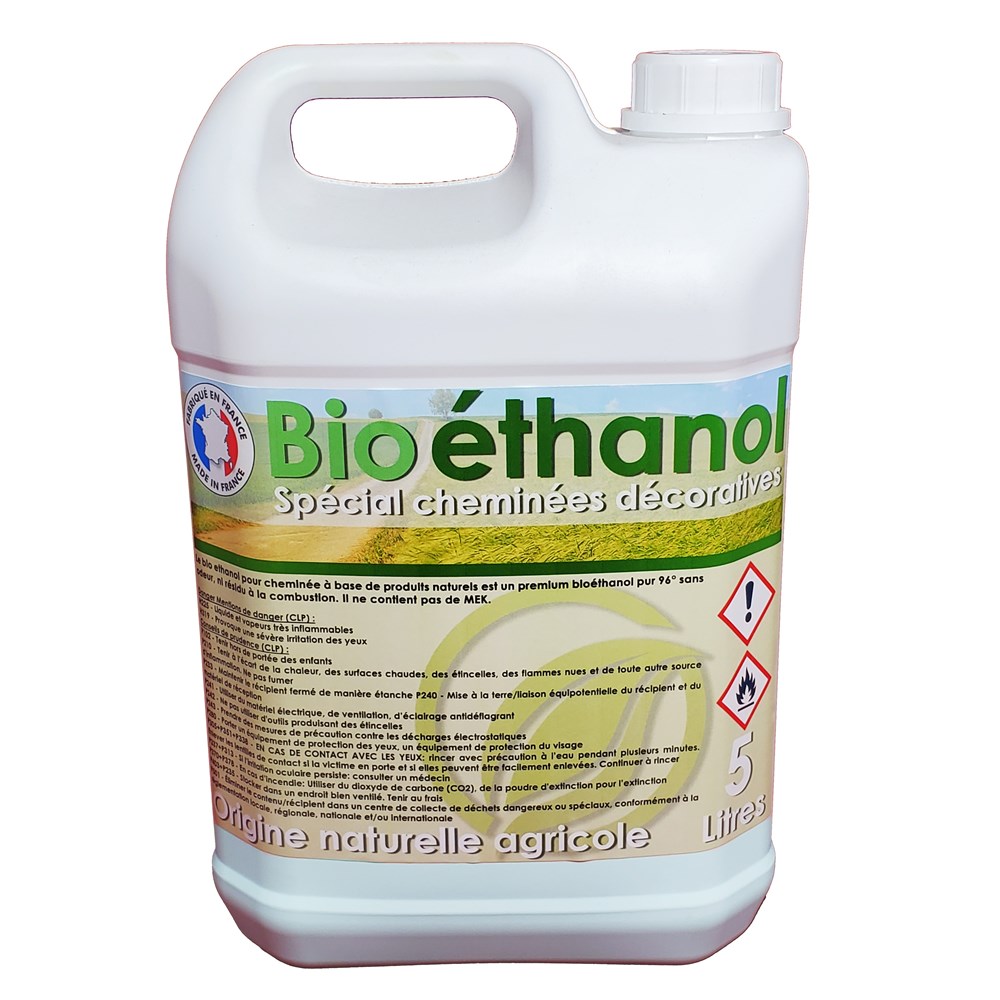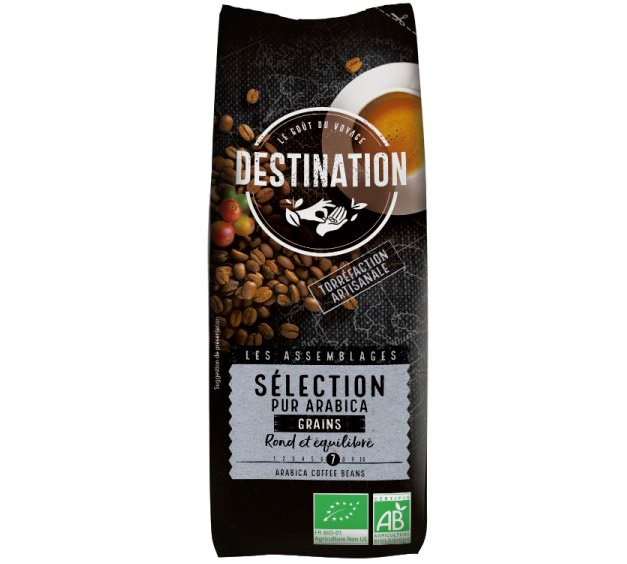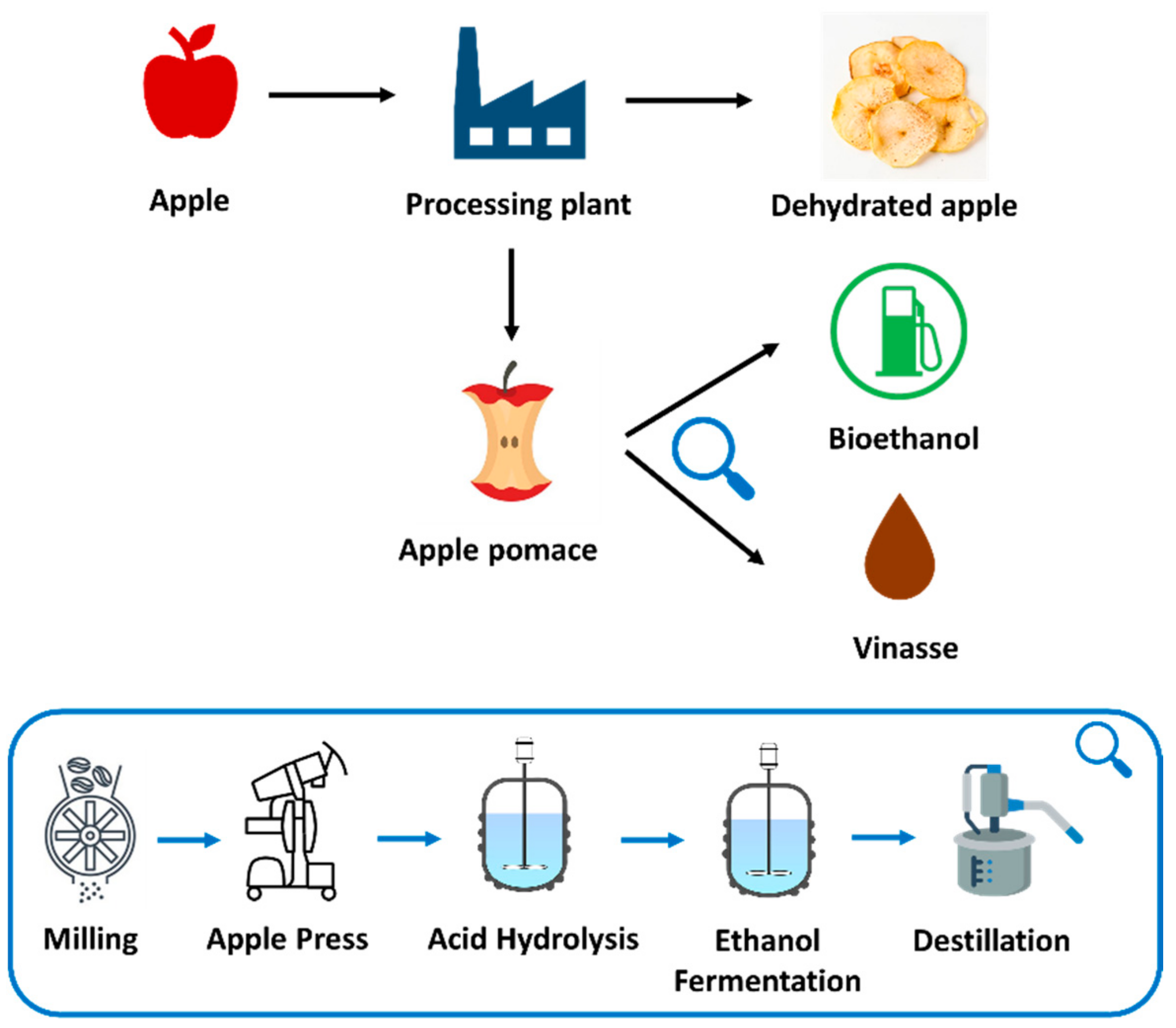
Fermentation, Free Full-Text
Bioethanol production has increased in demand as a replacement for conventional fuels. This work studies the use of apple pomace, which corresponds to 45% (w/w) of dehydrated apple production, as a reliable and inexpensive source for bioethanol production. Additionally, the vinasse obtained from the process as a byproduct is analyzed. Apple pomace has important properties for energy purposes, with high soluble sugar (6%–8%), organic compounds and low protein content. The carbohydrates were consumed in 99.3% in 144 h at a temperature of 30 °C and in a yeast Saccharomyces cerevisiae (YSC) concentration of 0.10 g/L. The bioethanol purity produced, 99.5% (v/v), was quantified by gas chromatography and calorific value (23.21 MJ/kg). This high purity, which fulfills the EN 15376, ASTM D 4806 Standard, allows its use as a fuel and oil additive. Moreover, it can be stated that vinasse obtained from alcohol distillation is a compound that has physicochemical values like other vinasses. Finally, Chile, as the most important exporting country of dehydrated apples in the world, has great potential to take advantage of the use of this raw material for bioethanol and vinasse production.

Types of Fermentation: Definition, Process, Advantages
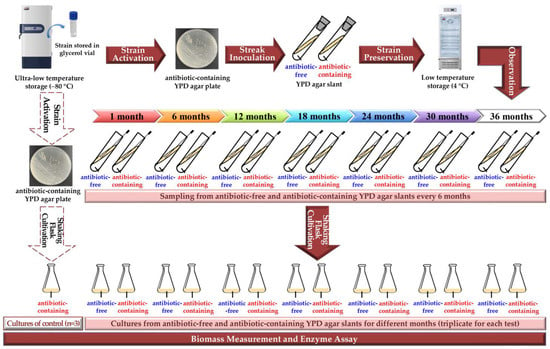
Pharmacology Experiments Software Free - Colaboratory
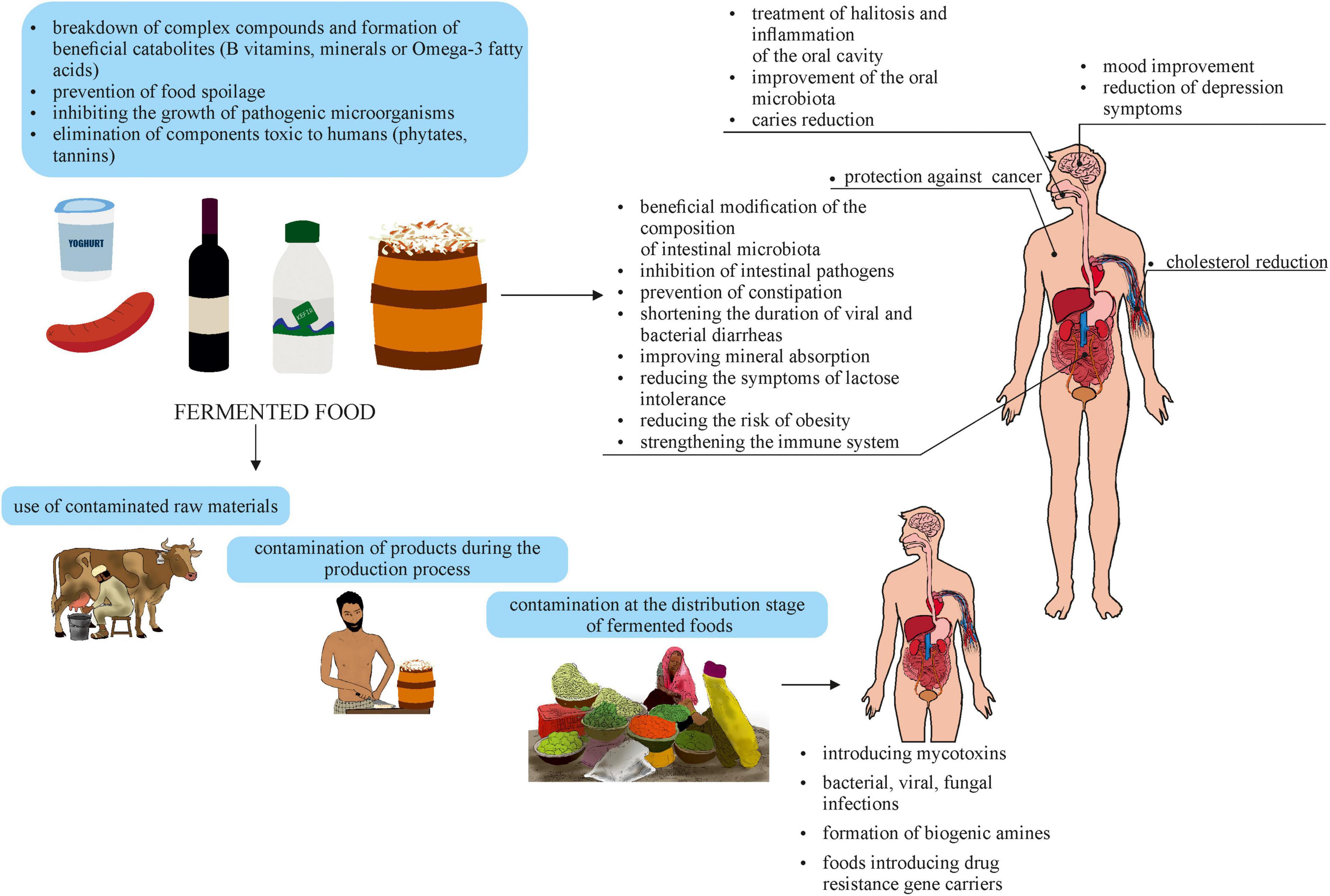
Frontiers Two Faces of Fermented Foods—The Benefits and Threats
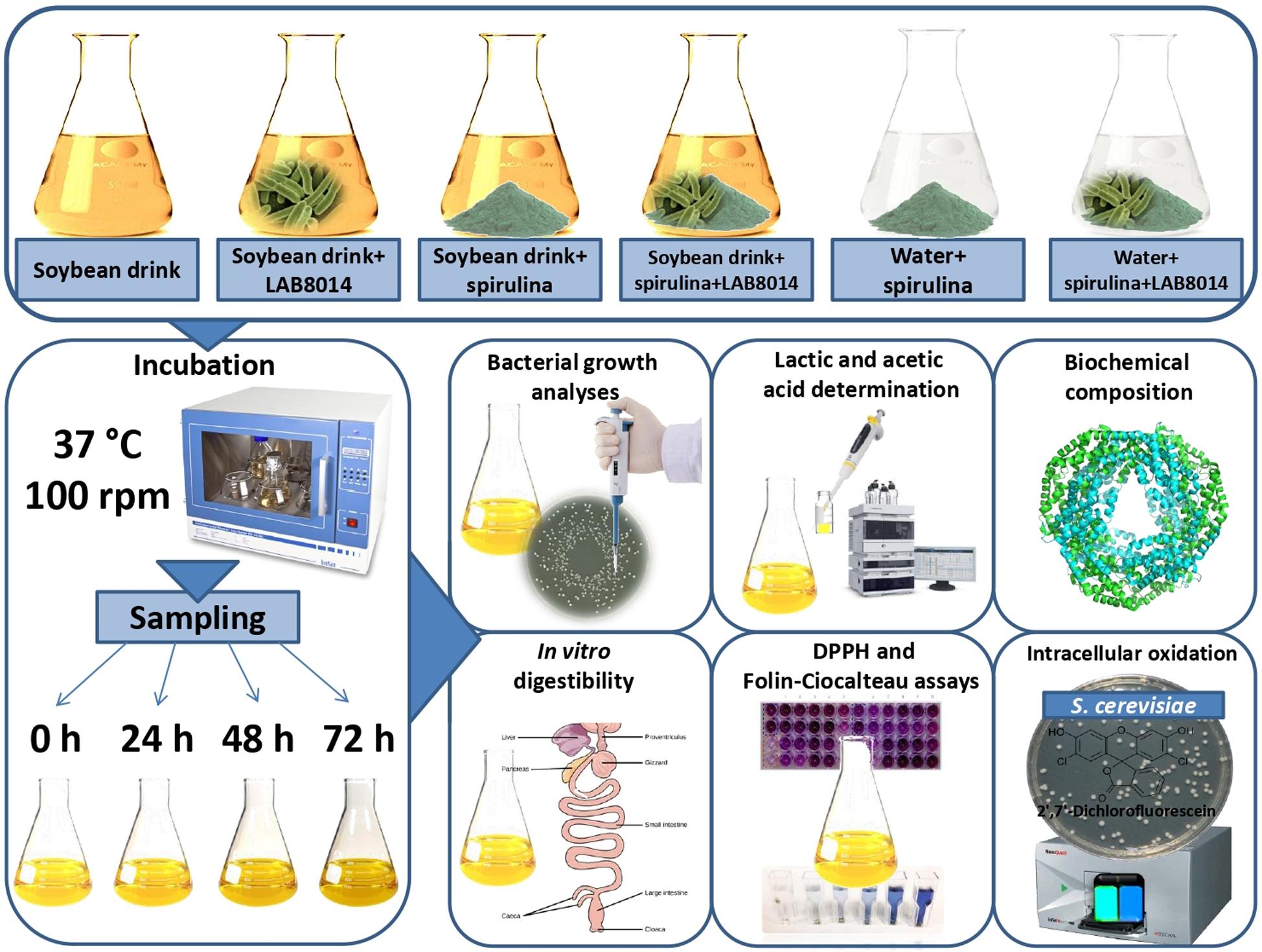
Frontiers Lactic Acid Fermentation of Arthrospira platensis

Fermentation and germination improve nutritional value of cereals

Ethanol Fermentation - an overview

Fermentation development using fruit waste derived mixed sugars
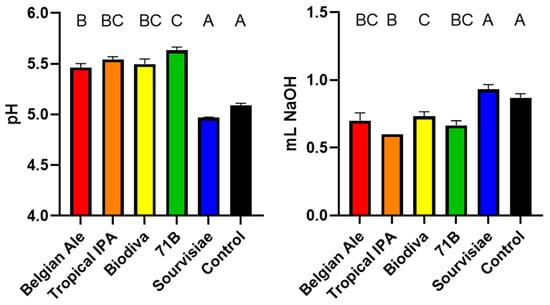
Star Chart Nano.Ripe Download - Colaboratory
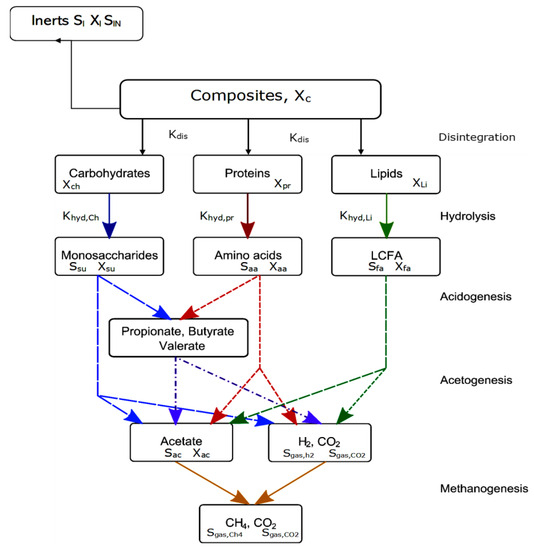
Xaa Mp Get File - Colaboratory

SOLUTION: Blueprint fermentation technology - Studypool
